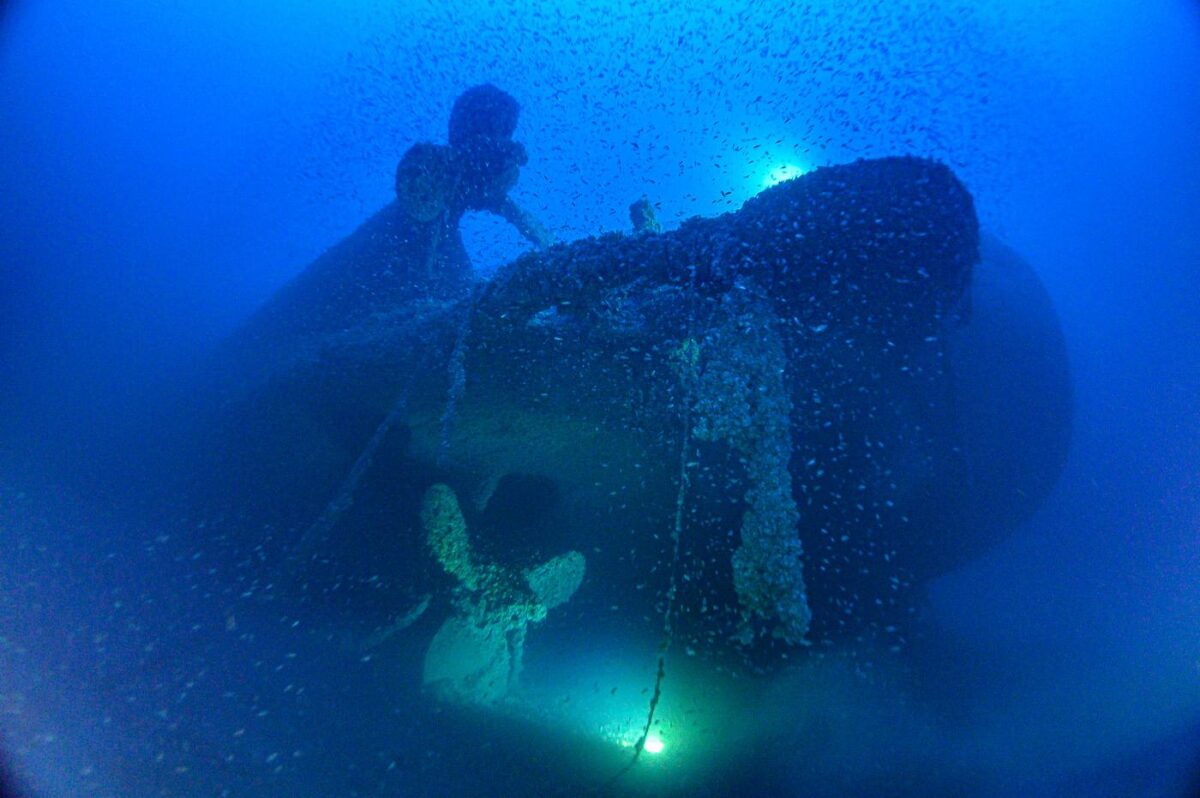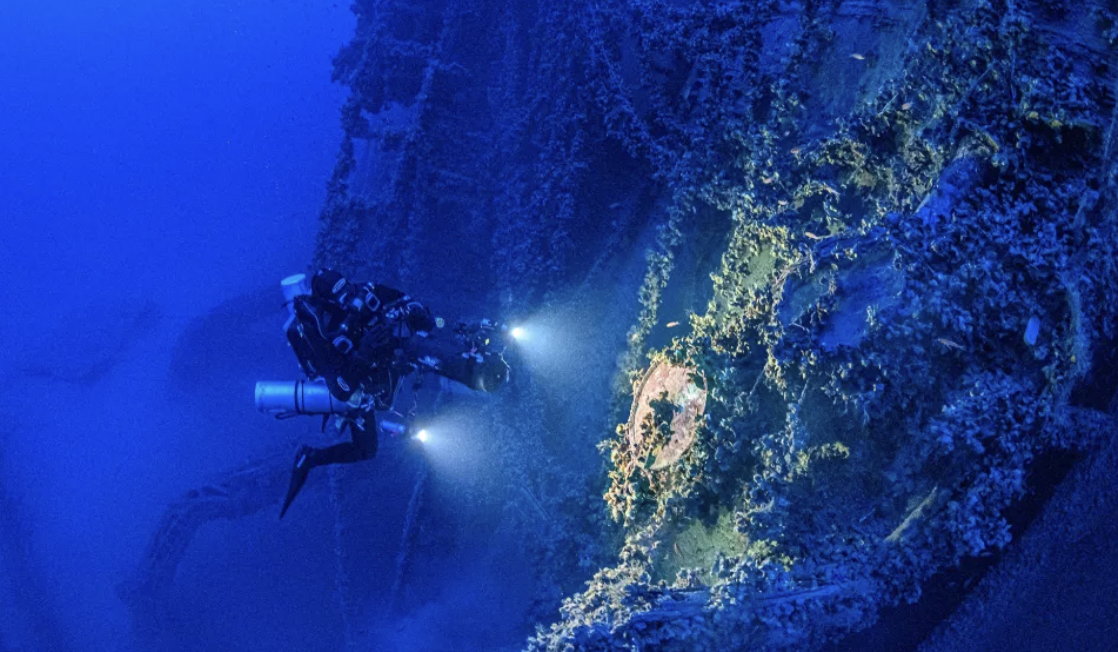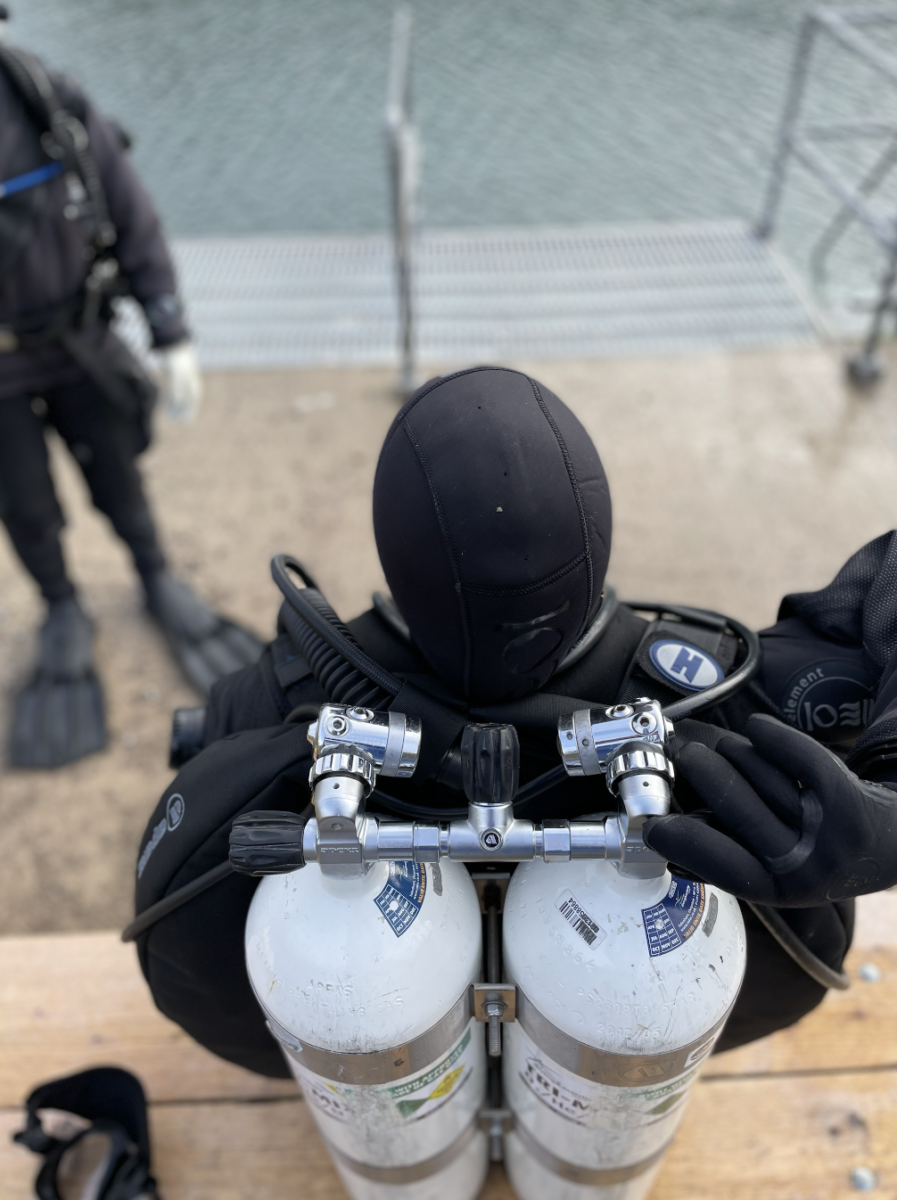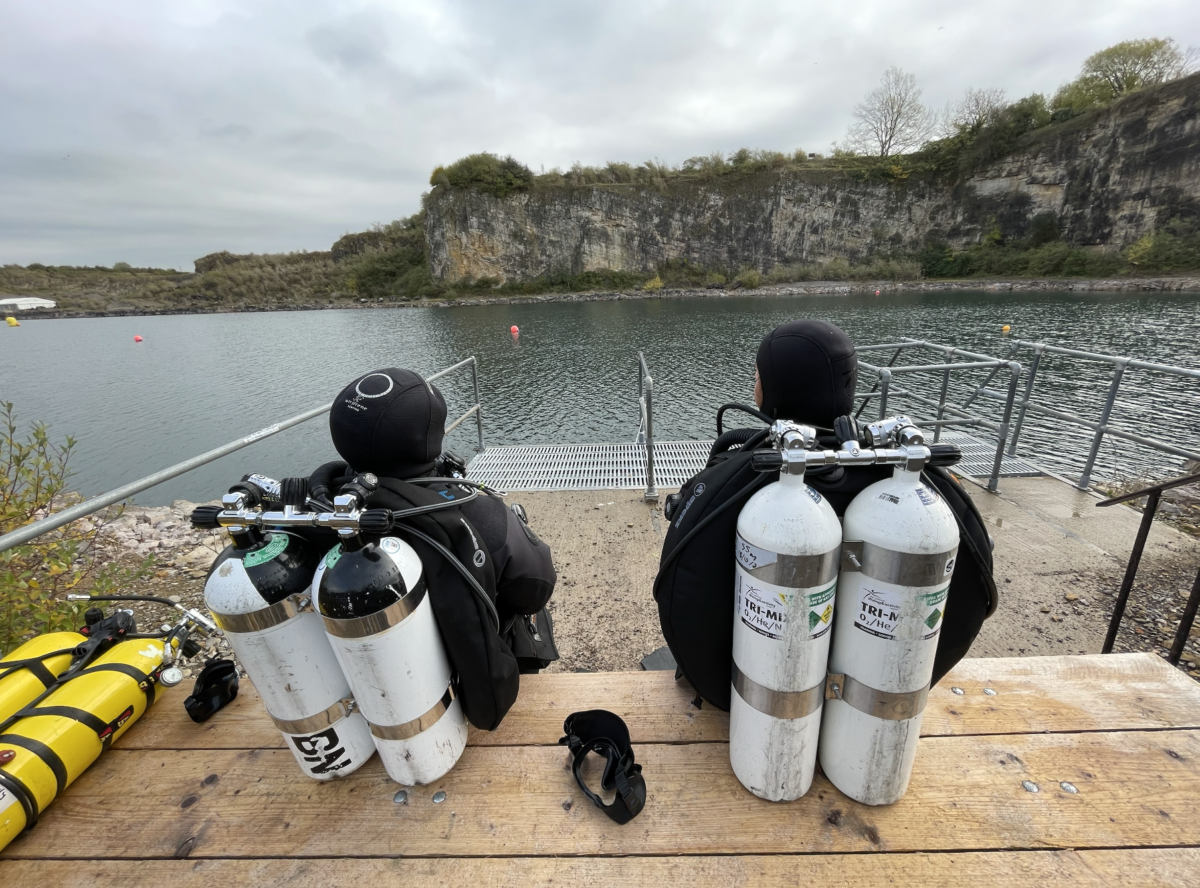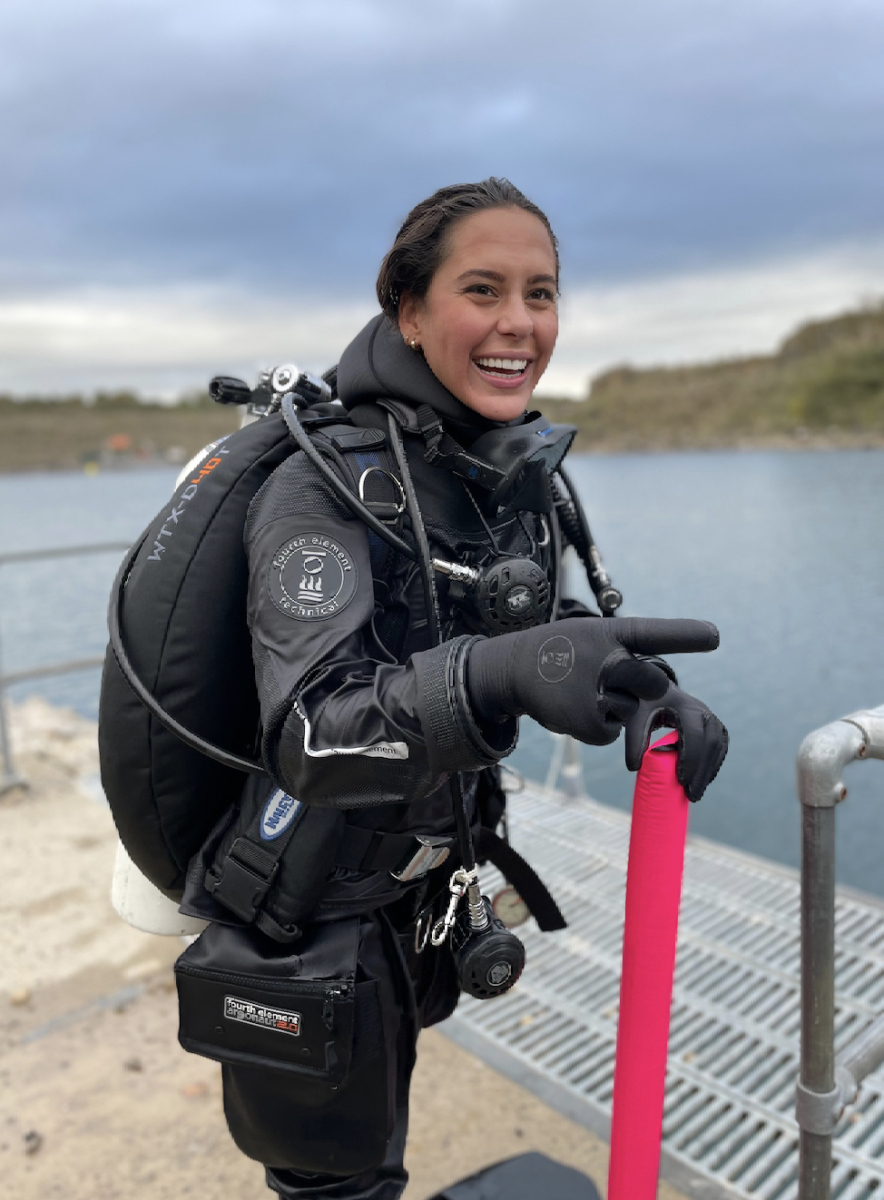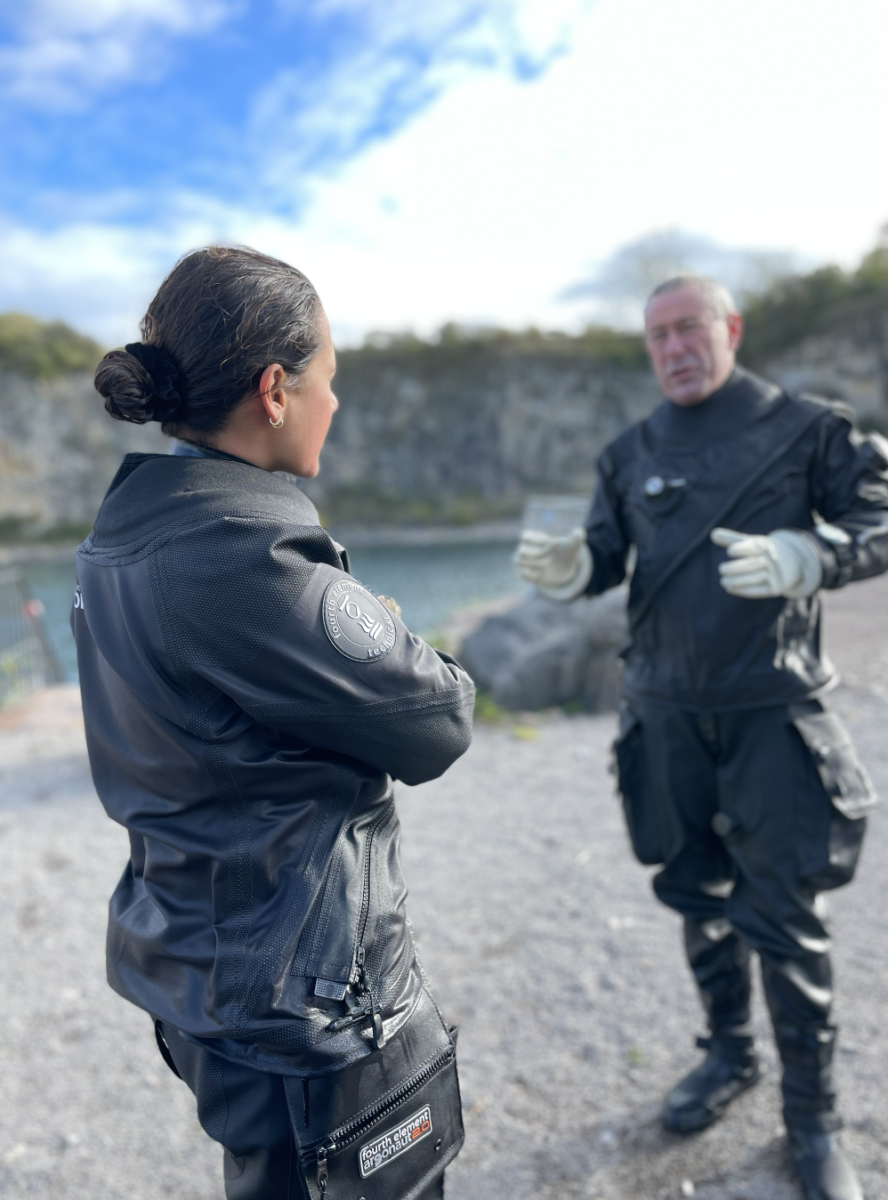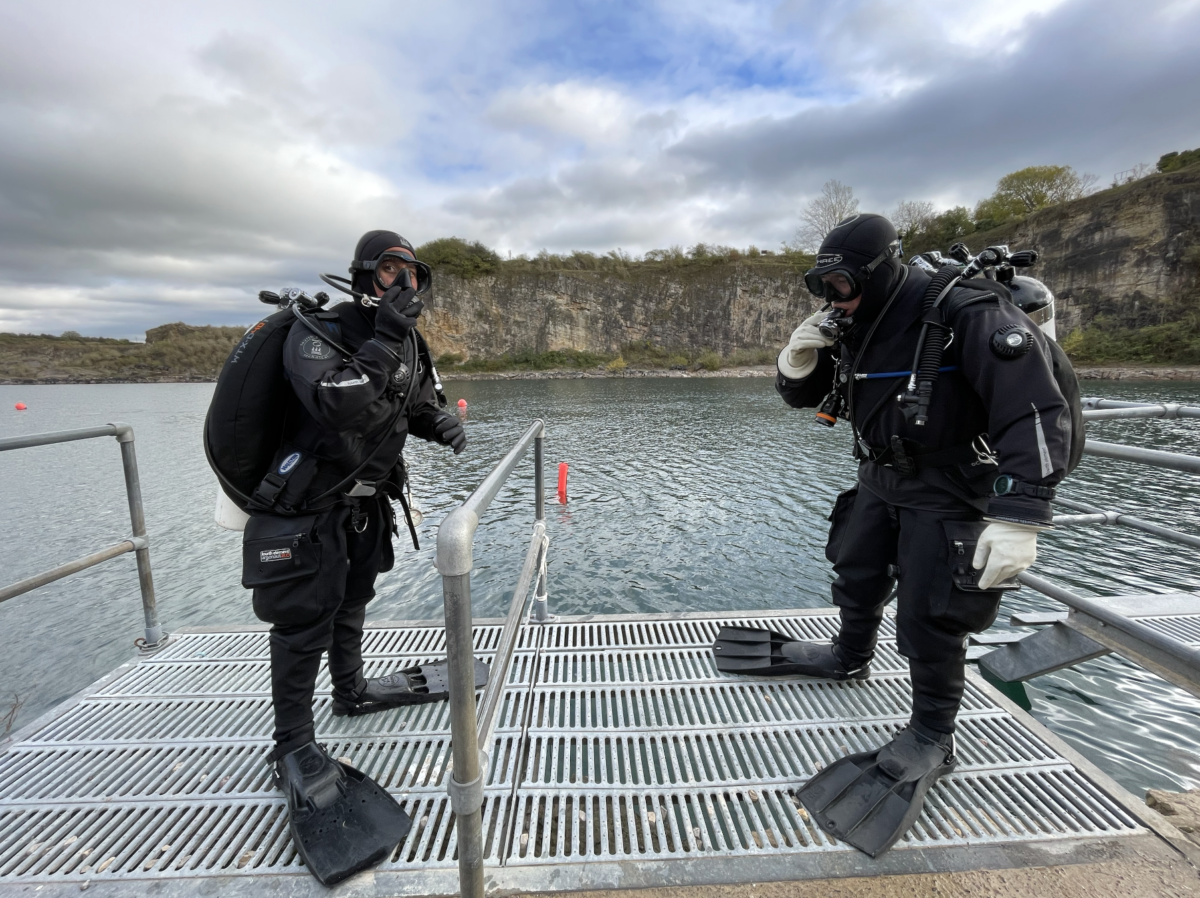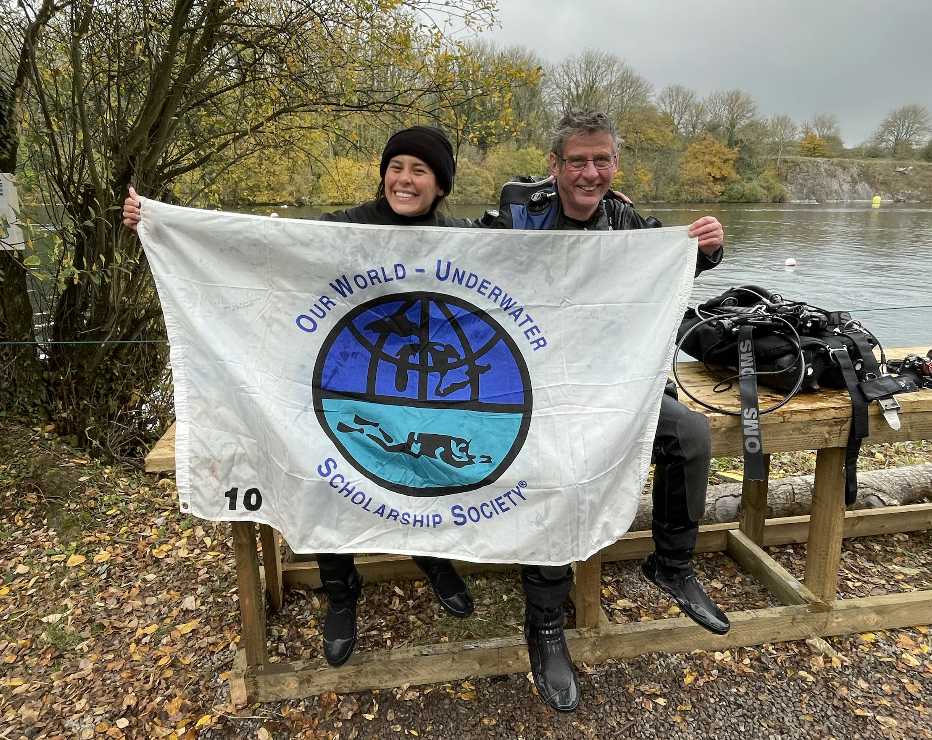I enjoyed my commercial diving course and the challenge of diving in cold water with low visibility so much, I decided to stay in the Bristol Area a little bit longer and to take on the next step in my diving journey: entering the world of technical diving. The scholarship continues to amaze me through the opportunities offered and the month of November particularly was humbling and deeply inspiring, as I started my journey into technical diving with two of the UK’s leading technical diving instructors. The first person I had the incredible opportunity to dive with was Mark Powell, a regular speaker at diving conferences around the world, author of the book “Deco for Divers” (in diving circles we like to dub it “the bible of decompression theory and physiology”) and renowned wreck explorer. Mark is also involved in a number of projects including documenting the wreck of HMS Hermes, the world’s first custom aircraft carrier, as well as searching for the other wrecks that were sank at the same time as HMS Hermes. Being able to learn from him – and hear about his dives to the HMHS Britannic, a legendary shipwreck at 122m – left me buzzing with excitement for the next months to come.
Technical Diving is more than simply going beyond recreational “no stop” limits. Rather, this discipline also includes increasingly challenging environments such as caves or shipwrecks, and advanced skills to manage specialized gas mixtures and decompression procedures. To conduct such dives safely and effectively, tech divers employ highly specialized equipment, like a closed or semi-closed circuit rebreather or a twin-cylinder set-up. The latter was why Mark and I met at Cromhall Quarry. Equipped with our drysuits, plenty of undersuits to stay warm and heaps of excitement, Mark and I took apart my Halcyon wing and backplate, and attached a bigger wing to it to ensure it would provide enough lift, before also mounting a twin cylinder set-up on it. As its name suggests, this consists of two 12l cylinders that are connected by a manifold with an isolation valve.
There are several advantages to diving with a twinset including more available gas, extra supply for safety and stability underwater – all of which enable longer and deeper dives. Throughout the training we worked on trimming my weight system to ensure that I am perfectly balanced in the water, went through gas management and air shutdown drills, and practiced how to respond correctly to potential problems and hazards when twin set diving. After an introduction to more advanced decompression theory and my first dives in a twin cylinder configuration, taking my GUE Fundamentals course was an inevitable next step.
Who better to take this course with than Richard Walker from Wreck and Cave? A highly experienced wreck and cave diver, GUE instructor and underwater explorer. What is GUE and what is the Fundamentals course you ask? GUE stands for Global Underwater Explorers and is a scuba diving organization committed to “Education, Conservation and Exploration” of the aquatic world. Among the diving community, GUE is known for a rigorous style of training that diverges from other diver training organizations and seeks to establish high levels of diver proficiency by extending training time, requiring high performance criteria and requiring requalification among its instructors and divers. GUE was formed by pioneering technical diver and record setting cave diver Jarrod Jablonski, becoming known more widely with the success of its well-known Woodville Karst Plain Project (WKPP) which played a vital part in the development of cave diving techniques and team diving protocols.
Before the start of my OWUSS scholarship year I had heard about and admired GUE’s new approach to diving through standardised equipment configurations, their focus on physical fitness, and mental toughness and proven commitment to conservation and exploration underwater. Dreaming of one day running specialized dive and media operations from my own research vessel in remote parts of the world, the GUE philosophy and approach to diving resonated deeply with me. It was hence a joy to join the GUE community and learn from Rich Walker himself. Through rigorous training Rich pushed me to fine-tune my dive skills and ability to maintain perfect buoyancy and trim during both simple and complex tasks underwater. Aside from learning the art of efficiently and comfortably donating gas to an out-of-gas diver followed by an ascent to the surface utilizing minimum decompression, I had to demonstrate proficiency in four propulsion techniques that would be appropriate in delicate and/or silty environments, including competence in the backward kick and helicopter turns.



Land drills involved going through all our exercises on land, including air sharing! Photo by Rich Walker.
I particularly loved the challenge of using the primary light during all skills and further refining my valve shutdowns and SMB deployment while maintaining perfect trim and buoyancy. To pass the course, students are required to demonstrate their ability to hold trim and buoyancy with a maximum of 30 degrees off horizontal while remaining within 5 ft/1.5 m of a target depth. Doing so is considerably easier in a drysuit with no additional equipment, than it is in a drysuit with twin cylinders, a large umbilical dive torch and minimal previous technical diving experience. I am proud to have passed, and absolutely loved my GUE Fundamentals course, not only because of the great learning curve, but because it enriched my time underwater with a completely new approach to diving.
Diving in the UK in the months between October and December certainly had its challenges but has made me a better diver able to cope with bad visibility, cold water, heavy equipment – at a certain point I was carrying a total of 43kg of equipment, while only weighing 54kg myself – and exposure to all kinds of wind and weather conditions in between dives. I really look forward to discovering the hidden gems along the UK coastline and using my new skills to explore some of the most exciting wreck sites, such as Scapa Flow. More importantly, I am excited to embark on my journey as a GUE diver and work towards further technical qualifications.
Thank you so much to Mark Powell from Dive Tech UK and Richard Walker from Wreck & Cave for introducing me to technical diving. This is only the start of a new journey! I am most grateful to the Our World Underwater Scholarship Society and Rolex for making opportunities like these possible. The brilliant people behind Fourth Element, Halcyon, Reel Diving and Suunto sponsored the amazing kit I got to wear during my training days.
